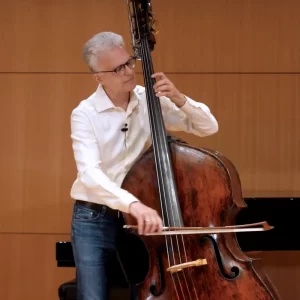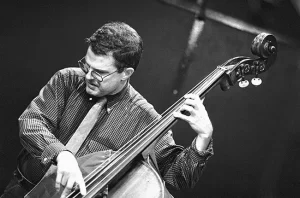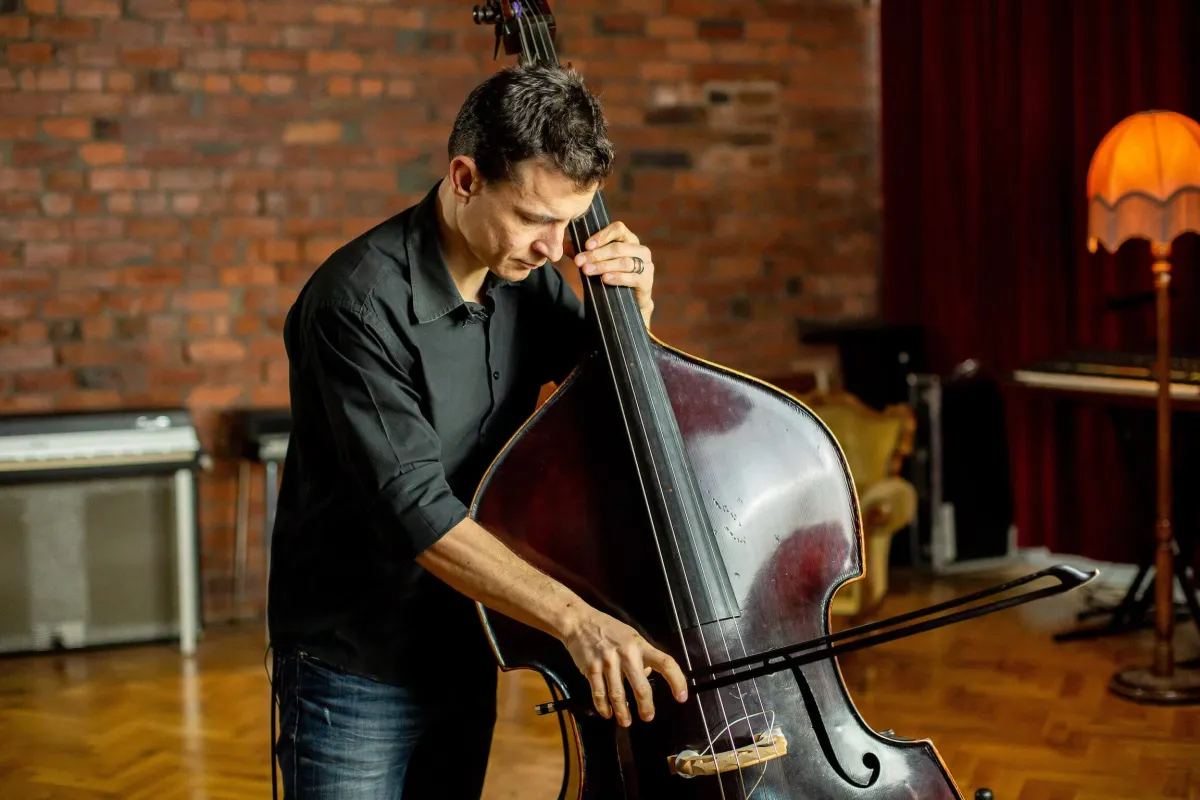Pizzicato is one of the double bass’s most distinctive and expressive features. It consists of producing the sound of the strings by plucking them directly with the fingers, without using a bow. Although it may seem simple at first glance, the pizzicato technique on the double bass encompasses an enormous variety of possibilities, styles, and nuances. Mastering it requires conscious practice, careful listening, and a good understanding of how each musical style utilizes it.
In this article, we’ll explore the basics of pizzicato, its applications in different musical genres, and practical tips for perfecting it in your daily life as a double bass player.
1. What is pizzicato?
The word pizzicato comes from Italian and means “pinched.” On the double bass, the technique involves plucking the strings with one or more fingers of the right hand to generate a direct, percussive sound.
In classical music, it often appears as a momentary indication in the score ( pizz. ), alternating with passages played with a bow. In jazz, on the other hand, pizzicato is the sound base, used almost exclusively in walking bass and accompaniment lines. In modern genres such as rock, tango, and Latin music, it also plays a central role.
2. Fundamentals of the technique

Posture and relaxation
The sound begins in the body. A relaxed posture, with a loose shoulder and a free arm, is essential for efficient pizzicato. The finger should “walk” over the string, not hit or drag it.
Finger choice
-
Index finger : the most used, gives control and consistency.
-
Alternating index and middle : common in jazz, allows fluidity in fast passages.
-
Thumb : Occasional in modern styles or for special effects.
Pulsation site
-
Close to the fretboard : rounder and warmer sound.
-
Near the bridge : brighter and more percussive sound.
3. Pizzicato in classical music
In the classical repertoire, pizzicato is more than just an effect. Great composers such as Tchaikovsky and Mahler used it to create rhythmic atmospheres and unique sounds.
Tips for classical pizzicato:
-
Uniform sound : each note must maintain clarity and projection.
-
Economy of movement : avoid exaggerated gestures that break continuity.
-
Respect the score : follow the exact duration indication, since pizzicato is often combined with expressive silences.
A famous example is the Scherzo from Tchaikovsky’s Symphony No. 4 , where the entire orchestra plays pizzicato, creating an unmistakable texture.
4. Pizzicato en el jazz
Jazz is undoubtedly the field where pizzicato shines most prominently. The double bass establishes the rhythmic and harmonic foundation of the band thanks to the walking bass , a continuous quarter note line that propels the music forward.
Tips for pizzicato in jazz:
-
Work on your pulse : use a metronome and practice walking over chords.
-
Use both fingers (index and middle) : alternate for speed and endurance.
-
Explore dynamics : the sound should have a clear attack but with body.
-
Listen to the greats : Paul Chambers, Ray Brown and Ron Carter are essential references.
The goal in jazz is to combine rhythmic precision with musicality, allowing the double bass to “walk” naturally.
5. Pizzicato in Latin and popular music
In genres such as salsa, tango, and bolero, pizzicato plays a very distinct rhythmic role. The double bass can alternate between repetitive patterns and short melodic lines that integrate with the percussion.
Tips:
-
Practice syncopations and accents characteristic of each genre.
-
Use a firm attack with your fingertip, for a percussive sound.
-
Listen to recordings of classic salsa and tango orchestras to internalize the style.
Here, the double bass not only accompanies: it also converses with the rest of the rhythm section.
6. Pizzicato in contemporary and experimental music

In contemporary music, pizzicato goes beyond the traditional. Widespread techniques are being explored, such as:
-
Pizzicato Bartók : the string is stretched and allowed to strike the fingerboard.
-
Multi-finger pizzicato : to generate chords.
-
Pizzicato on harmonics : to obtain ethereal sounds.
These features expand the language of the double bass and make it an even more versatile instrument.
7. Exercises to perfect your pizzicato
-
Quarter scales : Play a complete major scale pizzicato, keeping the beat steady.
-
Finger alternation : practice slowly with the index and middle fingers until the sound is equal.
-
Simple walking bass : over a 12-bar blues, build a basic line.
-
Dynamics : repeat the same line varying from pianissimo to fortissimo .
-
Endurance : Play a steady line for 5 minutes straight, focusing on relaxation.
8. Active listening: learn from the greats
Pizzicato isn’t just learned at the music stand; it’s learned by listening. Some essential double bass players for your sound library are:
-
Paul Chambers – precision and swing in jazz.
-
Ray Brown – power and clarity in big bands.
-
Edgar Meyer – versatility between the classic and the modern.
-
Gary Karr – lyricism and sonic richness in classical music.
-
Esperanza Spalding – innovation and freshness in contemporary jazz.
9. Final tips
-
Be patient: developing a solid pizzicato takes time.
-
Stay relaxed at all times: tension is your worst enemy.
-
Record yourself: Listening to your own sound will give you clear clues on how to improve.
-
Experiment with styles: each genre will give you new tools.
Conclusion
The art of pizzicato on the double bass is one of the most versatile and expressive techniques you can master. Whether in the elegance of a symphony, the swing of a jazz standard, the energy of Latin music, or the innovation of contemporary music, pizzicato connects you directly to the heart of the instrument.
Taking the time to perfect it will not only enrich your sound, but also open doors for you to confidently perform any musical style.
Pizzicato is both discipline and freedom: a bridge between rhythm and melody, between technique and emotion.

